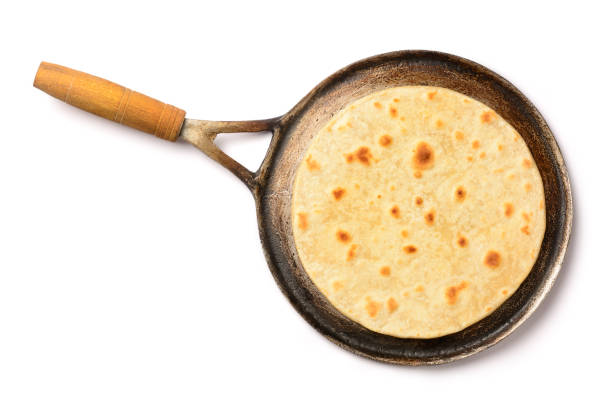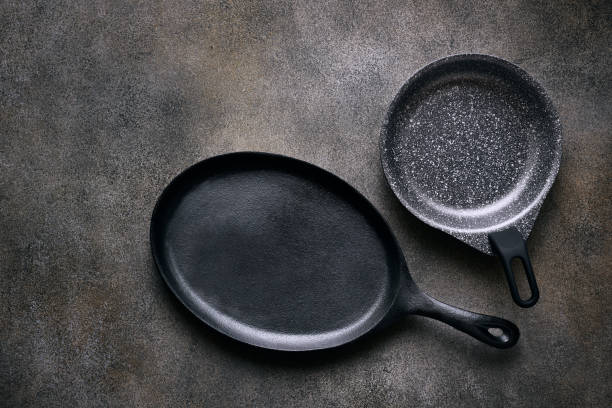The Great Chapati Battle Iron Griddle vs Clay Griddle
When it comes to chapatis, Indians are extremely picky. It’s not just about wheat flour or rolling skills, it’s also about which griddle you use. Some say, “Use iron, it’s healthy while others argue, “Clay is natural, nothing can beat it!” Honestly, this debate feels like India’s version of Marvel vs DC. But health matters, and the choice of griddle really affects the nutrition of your chapati. Iron tawa (griddle) adds a touch of iron to your food, which can actually help fight anemia. On the other hand, clay tawas have an earthy appeal and are chemical-free, which means no toxic coatings like non-stick pans. But is clay really practical for daily use? Let’s dig deeper, but remember—no matter what you choose, the final winner is always the one who eats hot, fluffy chapatis first
Why Iron Griddle Lovers Swear by Their Chapatis
Iron griddles have been in Indian kitchens for centuries, and for a good reason. When you cook chapati on an iron tawa, tiny amounts of iron seep into the food. That means your body gets a little natural iron supplement every time you eat. This is especially useful for people suffering from low hemoglobin or iron deficiency. Doctors often recommend cooking on iron utensils for this very benefit. Plus, iron tawas are super durable—they can last for decades if cared for properly. However, there’s a small catch: if you don’t season or clean it right, your chapati might stick or taste slightly metallic. Still, many grandmothers will argue that nothing beats the flavor of chapati cooked on an iron tawa. And let’s be real—when Grandma says something in the kitchen, it’s basically the law!
Clay Griddle The Old-School Eco-Friendly Hero
Now let’s talk about clay griddles—the earthy cousin of the iron tawa. Clay tawas are completely natural, eco-friendly, and free from harmful chemicals. They don’t release toxic fumes like some non-stick cookware does. Plus, chapatis cooked on clay griddles have a unique aroma, almost like a smoky earthy flavor, which makes them taste rustic and homely. Clay is also alkaline in nature, which can help balance the acidity in food. However, there’s a problem clay tawas are fragile. Drop them once, and you’ll have a clay funeral in your kitchen. They also require more care soaking seasoning, and slow heating. In today’s fast paced kitchen life, that’s a big turn-off for many. Still, for people who love traditional cooking vibes and Instagram-worthy rustic chapatis, clay tawas are a big yes

Health Perspective Which Griddle is Actually Better
If we put emotions aside and look purely at health benefits, iron griddles come slightly ahead. Why? Because they directly boost iron intake, which is essential for making red blood cells and keeping fatigue away. Clay griddles may add that earthy alkaline touch, but they don’t contribute as many nutrients as iron. On the other hand, clay does have a detoxifying effect because it doesn’t react with acidic foods. But remember, chapati dough itself isn’t very acidic, so the health impact is limited. So, if your goal is to make chapati healthier and also keep your body strong, iron tawas might be the smarter choice. Still, if you’re sensitive to iron or don’t like the taste, clay tawas are not a bad option at all. Basically it’s like choosing between Superman (iron) and Batman (clay) both are heroes, it just depends on your taste
Final Verdict Which Tawa Should Rule Your Kitchen
Here comes the final twist. If you are a health enthusiast and want maximum nutrition, the iron griddle is your best friend. It makes your chapatis stronger (just like Popeye’s spinach did for him) But if you’re someone who values tradition, taste, and earthy vibes, clay griddles are for you. In fact, some people keep both tawas iron for daily chapatis and clay for special occasions So, the smart way is to mix both worlds depending on your mood After all, food is not just about nutrients; it’s also about experience, smell, and culture. And let’s admit it whether you use clay or iron, no chapati ever tastes good without a little ghee on top! So, next time you argue about griddles just roll a hot chapati, smear some ghee, and let your taste buds decide
Disclaimer
The tips and suggestions mentioned in this article are intended for general informational purposes only. Before starting any fitness program, making changes to your diet, or trying any remedies related to health conditions, please consult your doctor or a qualified healthcare professional. Dr. You does not verify or endorse the authenticity of any such claims made herein

